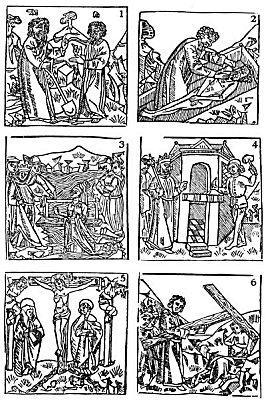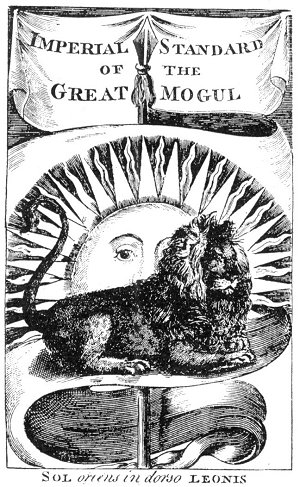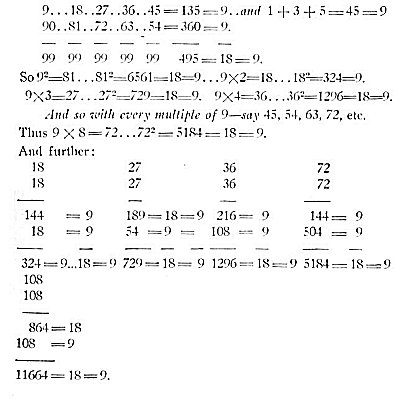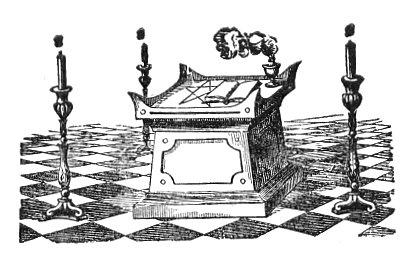be boldly affirmed to be documents by far antedating the Mosaic Bible, it is the duty of the scholars to present the world with truth, and nothing but the truth. Without regard to either skeptical or theological prejudice, they are bound to impartially examine both documents — the oldest Vedas and the Old Testament, and then decide which of the two is the original Sruti or Revelation, and which but the Smriti, which, as Max Muller shows, only means recollection or tradition.
Origen writes that the Brahmans were always famous for the wonderful cures which they performed by certain words; and in our own age we find Orioli, a learned corresponding member of the French Institute, corroborating the statement of Origen in the third century, and that of Leonard de Vair of the sixteenth, in which the latter wrote: “There are also persons, who upon pronouncing a certain sentence — a charm, walk bare-footed on red, burning coals, and on the points of sharp knives stuck
Page 445
in the ground; and, once poised on them, on one toe, they will lift up in the air a heavy man or any other burden of considerable weight. They will tame wild horses likewise, and the most furious bulls, with a single word.”
This word is to be found in the Mantras of the Sanscrit Vedas, say some adepts. It is for the philologists to decide for themselves whether there is such a word in the Vedas. So far as human evidence goes, it would seem that such magic words do exist.
It appears that the reverend fathers of the Order of Jesuits have picked up many such tricks in their missionary travels. Baldinger gives them full credit for it. The tschamping — a Hindu word, from which the modern word shampooing is derived — is a well-known magical manipulation in the East Indies. The native sorcerers use it with success to the present day, and it is from them that the father Jesuits derived their wisdom.
Camerarius, in his Horae Subscecivae, narrates that once upon a time there existed a great rivalry of “miracles” between the Austin Friars and the Jesuits. A disputation having taken place between the father-general of the Austin Friars, who was very learned, and the general of the Jesuits, who was very unlearned, but full of magical knowledge, the latter proposed to settle the question by trying their
subordinates, and finding out which of them would be the readiest to obey his superiors. Thereupon, turning to one of his Jesuits, he said: “Brother Mark, our companions are cold; I command you, in virtue of the holy obedience you have sworn to me, to bring here instantly out of the kitchen fire, and in your hands, some burning coals, that they may warm themselves over your hands.” Father Mark instantly obeyed, and brought in both his hands a supply of red, burning coals, and held them till the company present had all warmed themselves, after which he took them back to the kitchen hearth. The general of the Austin Friars found himself crestfallen, for none of his subordinates would obey him so far as that. The triumph of the Jesuits was thus accomplished.
If the above is looked upon as an anecdote unworthy of credence, we will inquire of the reader what we must think of some modern “mediums,” who perform the same while entranced. The testimony of several highly respectable and trustworthy witnesses, such as Lord Adair and Mr. S. C. Hall, is unimpeachable. “Spirits,” the spiritualists will argue. Perhaps so, in the case of American and English fire-proof mediums; but not so in Thibet and India. In the West a “sensitive” has to be entranced before being rendered invulnerable by the presiding “guides,” and we defy any “medium,” in his or her normal physical state
Page 446
to bury the arms to the elbows in glowing coals. But in the East, whether the performer be a holy lama or a mercenary sorcerer (the latter class being generally termed “jugglers”) he needs no preparation or abnormal state to be able to handle fire, red-hot pieces of iron, or melted lead. We have seen in Southern India these “jugglers” keep their hands in a furnace of burning coals until the latter were reduced to cinders. During the religious ceremony of Siva-Ratri, or the vigil-night of Siva, when the people spend whole nights in watching and praying, some of the Sivaites called in a Tamil juggler, who produced the most wonderful phenomena by simply summoning to his help a spirit whom they call Kutti-Sattan — the little demon. But, far from allowing people to think he was guided or “controlled” by this gnome — for it was a gnome, if it was anything — the man, while crouching over his fiery pit, proudly rebuked a Catholic missionary, who took his opportunity to inform the bystanders that the miserable sinner “had sold himself to Satan.” Without removing his hands and arms from the burning coals within which he was coolly refreshing them, the Tamil only turned his head and gave one arrogant look at the flushed missionary. “My father and my father’s father,” he said, “had this ‘little one’ at their command. For two centuries the Kutti is a faithful servant in our home, and now, Sir, you would make people believe that he is my master! But they know better.” After this, he quietly withdrew his hands from the fire, and proceeded with other performances.

Moe is the founder of GnosticWarrior.com. He is a father, husband, author, martial arts black belt, and an expert in Gnosticism, the occult, and esotericism.





